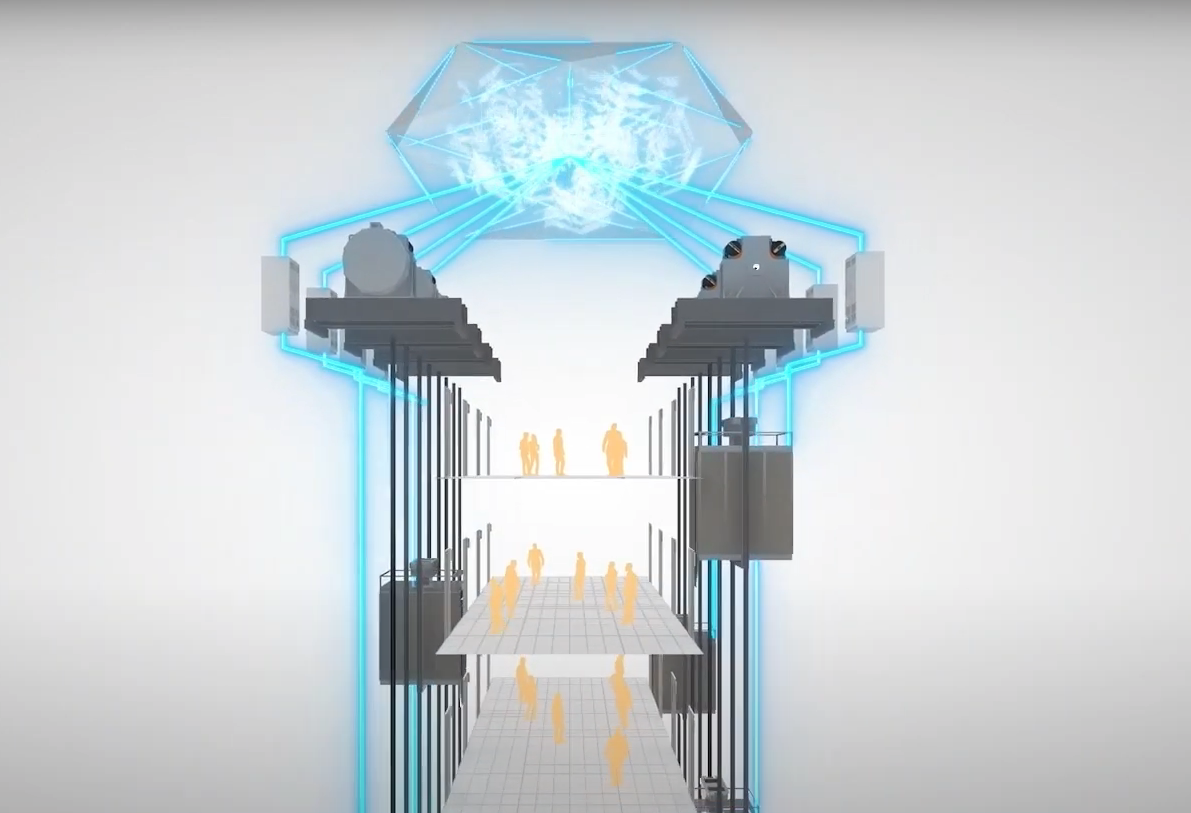Toshiba Elevators
The Next Era of Elevators Powered by the Platform
Elevators hold a special place in our collective experience. Remember the days that elevator music gave us easy listening remakes of pop songs? How about the “elevator pitch,” describing the ride from lobby to destination and the time it should take to sell a big idea? And in most recent times, the #elevatorselfie, a format for modern-day self-expression.
This people-moving machinery has become so ubiquitous that we hardly consider its origin, progression through time, or how it will evolve next. The first passenger elevator installed in a Manhattan department store in 1857 was so unpopular it shut down three years later. Today, companies like Toshiba Elevators and Building Systems Incorporated are making elevators so sophisticated and comfortable they race up high rises with 75 people aboard.
Building elevators for the future
“At Toshiba, we are always reimagining what’s possible when it comes to moving people efficiently and safely,” said Kazuhiro Hatano-san, former managing director of Toshiba Elevators. “We’re not just thinking about the elevator, but the entire environment that contains it. It’s our ultimate value to optimize the flow of people as a whole, not just get them to their destination floor.”
To fundamentally change how people move around a building, Kazuhiro says the company can’t rely on the old way of doing business. He describes workflows today that are disconnected, inefficient and insufficient for producing the outcomes he envisions. From sales and design to manufacturing and installation, different data sets live in different systems that don’t talk to each other or update in real-time.
While Toshiba designs an elevator in 3D, a 2D drawing may be required by a supplier that’s using different software. Meanwhile, the architects and engineers designing the building that houses the elevator may be using different systems than Toshiba. Changes to the elevator design at any stage require manual file updates across systems that are easily lost in translation. These types of data gaps are costly. In a recent global survey of IT executives, nearly 2/3 said slow data integration constantly delays projects and holds back their ability to be productive.
“At Toshiba, we are always reimagining what’s possible when it comes to moving people efficiently and safely”
Platform-connected data powers better outcomes
The solution, as Kazuhiro sees it, is end-to-end digital transformation: connecting all their data and processes on a single platform in the cloud. Toshiba is partnering with Autodesk to bring their data together in a unified environment, where they can create custom workflows that automate processes and accelerate their innovation vision.
This partnership is already producing better business outcomes. Toshiba is leveraging the Autodesk Forge platform to connect data between sales, design and the customer. In the past, the customer would receive their elevator drawings for the first time on the jobsite, setting off additional stakeholder reviews that can lead to revisions and delays late in the process. Today, with data synced to create a 3D configurator, customer feedback happens real-time in the early stages of design and immediately incorporates into Toshiba’s internal workflows, improving both efficiency and the customer experience.
“This is a new value—on-demand customization—that can only be realized through this digital connection,” said Kazuhiro.

“This is a new value—on-demand customization—that can only be realized through this digital connection.”
An industry in need of transformation
For all the advances that Toshiba has made with digital workflows, Japan as a whole is lagging. When the pandemic jolted digital transformation into high gear, Japan’s digital adoption trailed peer countries including the U.S., China, South Korea and European countries. And slow adoption has consequences. The World Economic Forum found that the most digitally advanced manufacturers increase production output by as much as 140% and reduce design-iteration time by as much as 98%.
In today’s environment, manufacturers can’t afford to ignore the digital transformation freight train. Labor shortages, the skills gap, and stalled-out productivity preceded the pandemic. Surging consumer demand and supply chain disruption followed thereafter, emphatically spotlighting the need for new ways of making.
Accelerating a virtuous cycle of improvement
To Kazuhiro and Toshiba, centralized data must be at the center of this process transformation. By working with Autodesk to unify data on a single platform, they can extend design data into other workflows from manufacturing to operations and realize their next-generation vision: cyber physical systems, or digital twins, that produce real-time insights into maintenance, repairs, flow of users, and the environment surrounding their elevators. The data informs a single elevator’s operation but also feeds back into the larger system, informing all new products that follow—a virtuous cycle of improvement that accelerates Toshiba’s power to reimagine possible.
“If we can control the flow of people beyond the elevator alone to the surrounding neighborhood and region,” said Kazuhiro, “we can reduce the losses that accompany inefficient movement of people. We’ll reshape how people live, giving them time back for higher value-added activities.”
People movers for a whole new era not yet written or captured by selfies. But in that future, one thing is certain: it will be powered by the platform.